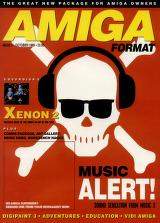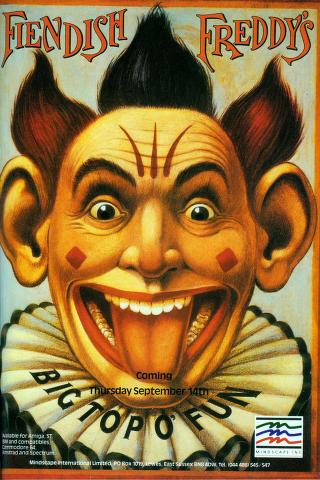
Excerpt from Amiga format issue 3
Waterloo
To wargaming fans, the name Dr Peter Turcan may, as yet, be unfamiliar. But ST and PC fans have experienced Peter’s earlier work Borodino, a wargame based on the conflict between Napoleon and the Russian Prince Kutusov. Now Amiga owners have the chance to re-fight one of Napoleon’s most famous battles in this one or two player simulation. Most wargames give the player an unrealistic view of the battlefield: failing in the attempt to recreate history because they invariably allow the player to see things that the historic commanders were unable to. Waterloo, however, is the closest a wargame has come to sticking a player in the commander’s boots. You view the game through the eyes of either Napoleon or Wellington, and issue orders to your subordinates – who in turn issue orders to their subordinates – based on what you see from your position on the battlefield and message? received from runners To familiarise yourself with the game system and me battlefield you can view the action through tie eyes of other commanders on the field, or from major landmarks. The orders you’re able to issue vary in complexity from vague commands like: ‘Lobau. give support to Reille’ (leaving the computer to decide how I Lobau can best give his support to Reille) to things like: ‘Lobau- form a defence line from the east flank to Frichermont linking with D’Erton’. Once you’ve decided which orders to issue [eight per turn, each turn representing fifteen minutes of real time, the battle lasting from 11.30 am until 9.30 pm), the orders are sent by messenger to their destination. Obviously, the further away this is, the longer it’s going to take for the orders to get through (if they do at all, because riders are just as prone to getting themselves killed as anyone else) so things can become very confusing: just as the battles were.
GRAPHICS AND SOUND
Forget sound, it’s not important. The 3D display however is great. It takes a short while for the screen to update, but that’s survivable. A short animated sequence of the cannons tiring, which is optional, is a nice touch, but for the majority of the time you’re looking at blocks representing the units.
JUDGEMENT
If you’re looking for a wargame mat’s fast, simple and easy to play then look elsewhere, but if you’re looking for a wargame that provides real challenge, will keep you playing for hours on end and which takes time to play well, then this is for you. The game system is easy to get to grips with but it’s not for your casual browser. Andy Smith
OVERALL 92%
Year of publication: October 1989
Games reviewed in this mag:
- F16 combat pilot
- Strider
- Xenon II
- Alien legion
- Astaroth
- Dominator
- Fiendish Freddy’s big top of fun
- Gemini wing
- Jack Nicklaus Golf
- Oil Imperium
- Robocop
- Skate of the art
- Waterloo
Other features:
- Music X review
- Rombo vidi review
- Digi Paint 3 review
- Dpaint tutorials
- DTP special on colour separation and Gold Disks Professional Page software and Pagestream
- Fitting kickstart ROM chips
Games tips hints and cheats for:
- Kult
- Sleeping gods lie
- Batman
- Vigilante
- Cybernoid 2
- Navy moves
- Kick off
- Chariots of wrath
- Spherical
- Sword of Sodan
- Silkworm
- The Kristal
Contents of cover disk
Xenon 2 demo, Amiga format music demo by 17bit software, Dpaint clipart
Click here to download Amiga Format issue 3
Click here to download the coverdisk ADF (not currently available)

Poster for Fiendish Freddy’s Big Top o Fun. A game released by Mindscape in 1989 on Amiga, ST, C64, Amstrad and Spectrum computers